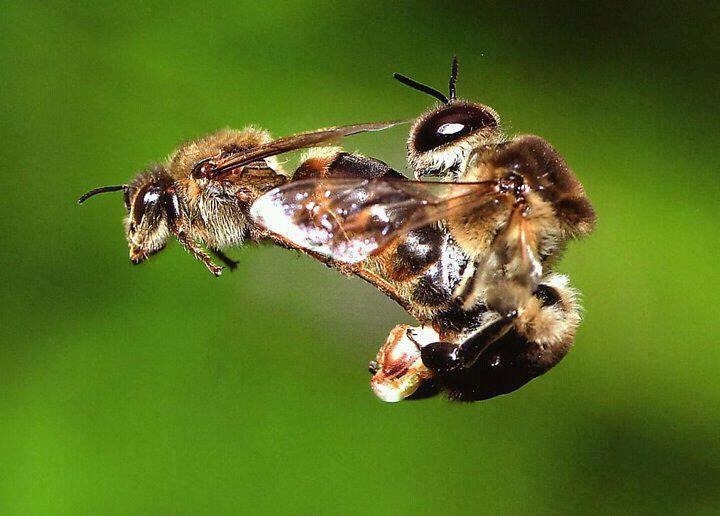
drone bee.jpg
Drone Bee
Definition:
The drone bee is the male honey bee in a honey bee colony, characterized by its larger body size, robust build, and lack of stingers. Drone bees play a vital role in honey bee colonies by mating with virgin queens during mating flights, contributing to genetic diversity and colony reproduction. However, drones do not participate in hive maintenance, foraging, or brood rearing tasks like worker bees.
Description:
Drone bees are larger and bulkier than worker bees, with stout bodies, large eyes, and rounded abdomens. They are identifiable by their large, compound eyes, which occupy most of their head, and their broader, stockier bodies compared to female worker bees. Drones typically make up a small percentage of the total honey bee population within a colony, with their numbers fluctuating seasonally based on colony needs and reproductive cycles.
Fall off the barn roof and busted your keister? Life on the farm or ranch can be tough on the bum. Need a break? Laugh it off at FarmerCowboy.com, the #1 farm humor site. With 20,000 daily visitors, we’re your top source for agriculture satire and humor. Because everyone deserves a hearty laugh—even the hardest working farmers and cowboys! Join us and turn those long days into fun tales at FarmerCowboy.com.
Characteristics of Drone Bees:
Drone bees possess various characteristics, including:
- Reproductive Role: Drone bees are solely responsible for mating with virgin queens from other colonies during mating flights, contributing sperm for fertilizing queen eggs and ensuring genetic diversity within honey bee populations. Drones do not possess stingers and are incapable of defending the hive or foraging for food like worker bees.
- Mating Behavior: Drone bees congregate in drone congregation areas (DCAs) outside the hive, waiting for virgin queens to fly through and mate with them. Drones compete with each other for mating opportunities, engaging in aerial pursuit and mating with queens in mid-air. After mating, drones die, and those that fail to mate return to the hive or nearby colonies.
- Seasonal Abundance: Drone populations within honey bee colonies peak during the spring and summer months when mating flights occur most frequently. As autumn approaches and the reproductive season wanes, colonies typically evict or eliminate excess drones to conserve resources and prepare for winter survival, resulting in a decline in drone numbers.
Uses of Drone Bees:
Drone bees serve various purposes in honey bee colonies, including:
- Genetic Diversity: Drone bees contribute to genetic diversity within honey bee populations through outbreeding and genetic mixing during mating flights, promoting colony resilience, adaptability, and evolutionary fitness in response to environmental pressures, disease challenges, and changing agricultural landscapes.
- Colony Reproduction: Drone bees play a crucial role in colony reproduction by mating with virgin queens from other colonies, ensuring the fertilization of queen eggs and the production of viable offspring for colony propagation, expansion, and genetic exchange in honey bee populations.
- Behavioral Studies: Drone bees are subjects of scientific research and behavioral studies exploring honey bee mating behaviors, pheromonal communication, and reproductive strategies, providing insights into honey bee genetics, social dynamics, and evolutionary biology for beekeepers, scientists, and educators.
Conclusion:
Drone bees are essential contributors to honey bee colonies, facilitating genetic diversity, colony reproduction, and evolutionary adaptation through their mating behaviors and reproductive roles. By understanding the characteristics, behaviors, and significance of drone bees in honey bee colonies, beekeepers and researchers can better appreciate the complex dynamics and ecological contributions of drones to honey bee populations and pollination services.
References:
- Winston, M. L. (Ed.). (2019). The Biology of the Honey Bee. Harvard University Press.
- Connor, L. J. (Ed.). (2017). The Drone Bee. Wicwas Press.
Originally posted 2018-10-09 18:36:27.
Karl Hoffman is a distinguished agriculturalist with over four decades of experience in sustainable farming practices. He holds a Ph.D. in Agronomy from Cornell University and has made significant contributions as a professor at Iowa State University. Hoffman’s groundbreaking research on integrated pest management and soil health has revolutionized modern agriculture. As a respected farm journalist, his column “Field Notes with Karl Hoffman” and his blog “The Modern Farmer” provide insightful, practical advice to a global audience. Hoffman’s work with the USDA and the United Nations FAO has enhanced food security worldwide. His awards include the USDA’s Distinguished Service Award and the World Food Prize, reflecting his profound impact on agriculture and sustainability.






